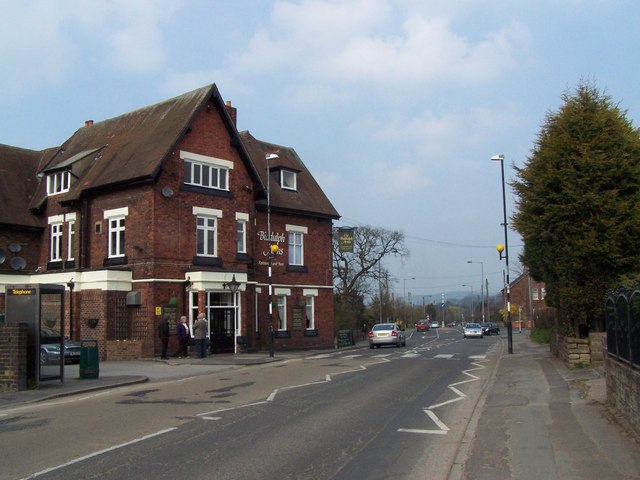Newpool
Settlement in Staffordshire Staffordshire Moorlands
England
Newpool

Newpool is a small village located in the county of Staffordshire, England. Situated in the heart of the Staffordshire Moorlands, it lies approximately 5 miles southeast of the town of Leek and 12 miles northeast of the city of Stoke-on-Trent. The village is nestled amidst picturesque countryside, with rolling hills and lush green fields surrounding it.
With a population of around 500 residents, Newpool is known for its tight-knit community and friendly atmosphere. The village primarily consists of traditional stone-built houses, giving it a charming and rustic feel. The main focal point of the village is the local village hall, which serves as a venue for community events and gatherings.
Newpool is fortunate to be surrounded by natural beauty, with several walking trails and footpaths in close proximity. This makes it an ideal location for outdoor enthusiasts and nature lovers. The nearby Hulme End is a popular spot for visitors, offering stunning views and opportunities for hiking, cycling, and bird watching.
Despite its small size, Newpool benefits from good transportation links. The A523 road runs through the village, connecting it to nearby towns and cities. Additionally, there are regular bus services that provide easy access to Leek and Stoke-on-Trent.
In terms of amenities, Newpool has a small convenience store that caters to the daily needs of its residents. However, for more extensive shopping and leisure activities, residents often visit the nearby towns and cities.
Overall, Newpool offers a peaceful and idyllic lifestyle in the heart of the Staffordshire countryside, making it a desirable place to live for those seeking a close-knit community and a connection to nature.
If you have any feedback on the listing, please let us know in the comments section below.
Newpool Images
Images are sourced within 2km of 53.108678/-2.185948 or Grid Reference SJ8756. Thanks to Geograph Open Source API. All images are credited.









Newpool is located at Grid Ref: SJ8756 (Lat: 53.108678, Lng: -2.185948)
Administrative County: Staffordshire
District: Staffordshire Moorlands
Police Authority: Staffordshire
What 3 Words
///currently.mammoth.cave. Near Biddulph, Staffordshire
Nearby Locations
Related Wikis
Braddocks Hay
Braddocks Hay is a village in Staffordshire, England. Population details for the 2011 census can be found under Biddulph
Tunstall Road
Tunstall Road, also known as Victoria and Knypersley Social Welfare Centre, is a cricket ground in Knypersley, Staffordshire. The ground is located along...
Knypersley Hall
Knypersley Hall is an 18th-century Georgian style country mansion at Biddulph, Staffordshire, England. It is protected as a Grade II* listed building....
Biddulph High School
Biddulph High School is a mixed upper school (termed 'high school') and sixth form located in the Knypersley area of Biddulph in the English county of...
Biddulph railway station
Biddulph railway station was a railway station opened by the North Staffordshire Railway in 1864. Originally named Gillow Heath the station was renamed...
Biddulph
Biddulph is a town in Staffordshire, England, 8.5 miles (14 km) north of Stoke-on-Trent and 4.5 miles (7 km) south-east of Congleton, Cheshire. == Origin... ==
Black Bull railway station
Black Bull railway station is a disused railway station in Staffordshire, England. The station was opened in 1864 by the North Staffordshire Railway on...
Harriseahead
Harriseahead is a village in the county of Staffordshire, England, just north of the Potteries (Stoke on Trent) and about 2 miles (3.2 km) south-west of...
Nearby Amenities
Located within 500m of 53.108678,-2.185948Have you been to Newpool?
Leave your review of Newpool below (or comments, questions and feedback).











